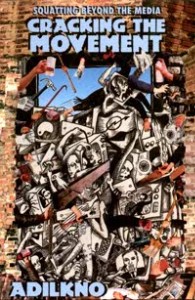Terence Kissack
AK Press
2008
229 pages
Hi there, fellow cybernet users, I borrowed Free Comrades: Anarchism and Homosexuality in the United States, 1895-1917 from the Toronto Public Library.
Anarchists, social anarchists in particular, have always stood with the socially vulnerable and have often expressed a degree of sympathy (if not outright support) for the culturally deviant. Terence Kissack’s book Free Comrades: Anarchism and Homosexuality in the United States, 1895-1917 examines the interest and support pledged to GLBT issues by prominent anarchist during the late 19th and early 20th century, when homosexuality was largely criminalized by American society. Most of the anarchists discussed in Kissack’s book were not avowedly homosexual, but they spoke in favour of decriminalizing homosexuality and included it in their visions for an anarchist society.
Terrence Kissack is the current treasurer (and was, formerly, the executive director) for the GLBT Historical Society based in San Francisco California. This society, formed in the mid-1980s, manages an extensive archive (and associated reading room) of GLBT related documents and historical materials. The society also sponsors the GLBT History Museum, which is currently featuring an exhibition titled, “Our Vast Queer Past: Celebrating San Francisco's GLBT History” that attempts to represent all aspects of Queer history in San Francisco through historical objects and images. The museum also curates online exhibitions using social media/user created content web platforms, such as the Dykes on Bikes exhibition that’s now viewable on as a YouTube clip.
Free Comrades is a book adaptation of Kissack’s doctoral dissertation, which he received in 2004 from New York University. The book takes its title from a publication called The Free Comrade, published by John William Lloyd, an ardent supporter of radically transcendentalist (and widely assumed to have been homosexual) American poet, Walt Whitman.
Kissack's book does not, necessarily, focus upon homosexual anarchists, and rather directs its spotlight upon issues and controversies of homosexuality during the late 19th century and early 20th century, and the anarchist interaction. An example is the second chapter, a discussion of the support shown by anarchists such as Emma Goldman for Oscar Wilde during his persecution (and prosecution) for engaging in "gross indecency with other men".
Each chapter develops along such lines, and Kissack is always sure to contrast the Anarchist support for sexual freedom in America against dominant voices of moral indignation at such ideas. While the anarchists argued passionately for Wilde’s right to express his sexuality in the wake the great writer’s arrest, mainstream cultural commentators came to a collective revelation that Wilde’s work was actually terrible. Kissack carefully contextualizes each of the sexual crises or the queer-friendly cultural forms he discusses in its broad socio-historical setting to create a strong sense of the hostile climate anarchists and homosexuality was operating under. Even among anarchists or political radicals the atmosphere was tense, as Kissack notes that even some anarchists struggled with accepting anything other than hetero-normative sexuality. John William Lloyd, the previously mentioned great admirer of Whitman and who is noted, in Kissack’s text, as having argued for a vast array of sexual experimentation as part of an overall social revolutionary program, came to renounce Walt Whitman and same-sex relations. Kissack calls this turn, “a moment of literary, political and sexual panic,” and discusses a change in Lloyd’s writing and use of language that involved a divestment of any word the radical author perceived as having homosexual connotations. Kissack goes on to discuss the cultural context for this change which demonstrates the shifting intellectual ground that lay beneath these issues and createed political tensions for those who gave voice to them.
Kissack’s book is also full of histories of anarchists who never wavered from their positive attitude towards queer rights and issues. Foremost among them was Emma Goldman, who appears throughout Kissack’s text, and throughout virtually any text that discusses the intersection of anarchists and the socially vulnerable in early 20th century America. There is also a chapter devoted to Alexander Berkman and his book, Prison Memoirs of an Anarchist, which included memories of homosexual desire that Berkman experienced during his 14 year incarceration. Furthermore, Kissack discusses how cynical political commentators of the early 20th century used insinuations of lesbianism, particularly in regard to the friendships Emma Goldman had with other women, as a derogatory metaphor for radical politics - a rhetorical flourish that persists in the right-wing repertoire. In fact, many of the historical issues Kissack raises in this text are ongoing today. What has whithered from the popular public sphere is the voice of the radical left.
By the way - Here’s part one of a video of Terrence Kissack discussing, and reading from, this book:




